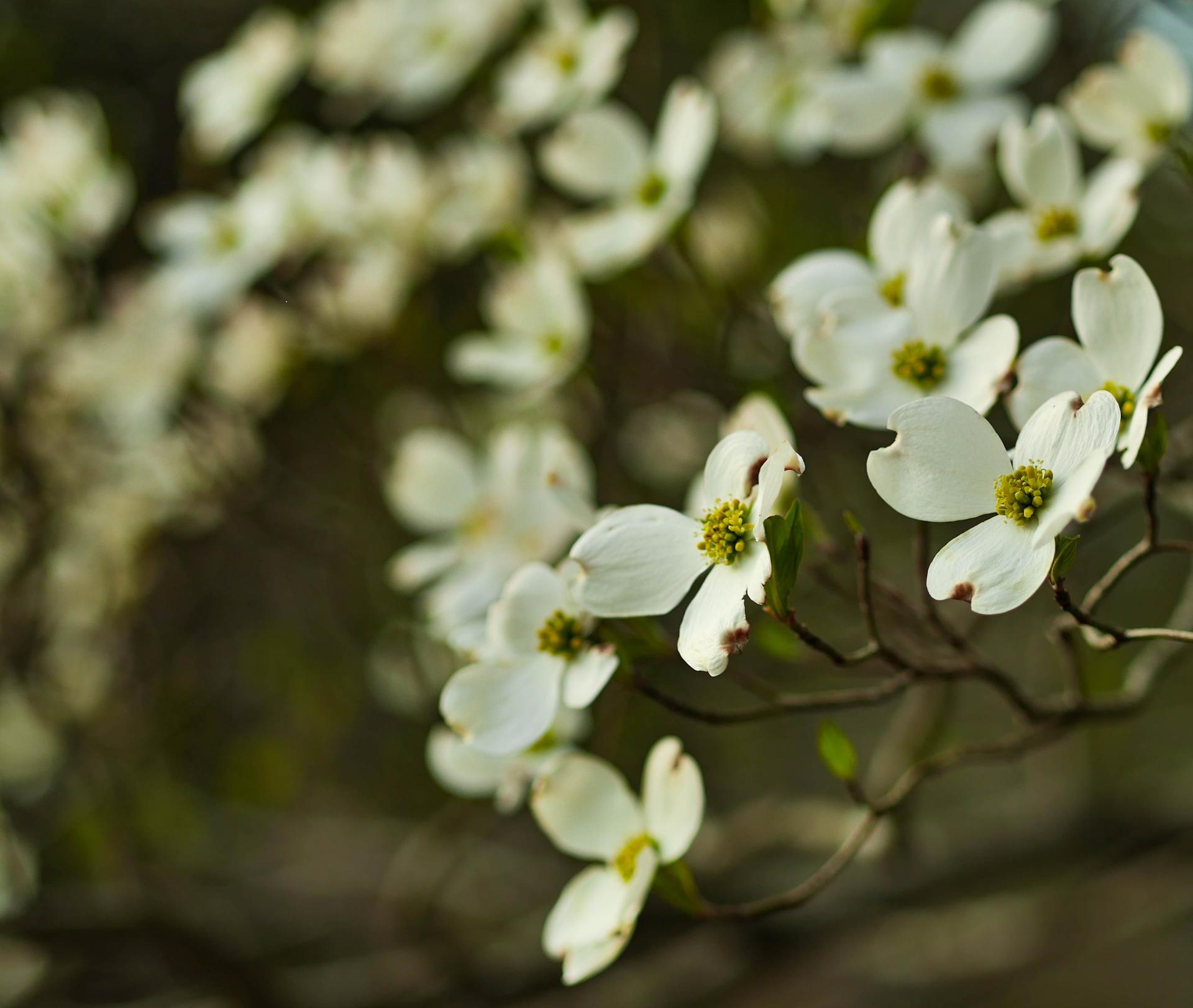You are here
Be A Better Gardener: A New Perspective on Invasive Plants
Be A Better Gardener: A New Perspective on Invasive Plants
by Thomas Christopher
I heard a wake-up call, loud and clear, last summer. I was part of a group touring a garden in Connecticut, and we were gathered round a handsome kousa dogwood (Cornus kousa) in full bloom. Various members of the group commented that similar trees in their gardens were spawning seedlings in adjacent woodlands. Subsequently, I found that this species has recently been identified as an emerging invasive in the state of New Jersey.
How could this be? For decades I have heard kousa dogwoods described as harmless in this respect. This species was originally introduced into North America from its East Asian homeland in the 19th century, but it remained a rare collector’s plant until the mid 1970’s. That was when an anthracnose fungus began ravaging populations of our native dogwood tree (Cornus florida). Kousa dogwoods proved virtually immune to the disease, and were heavily promoted as a substitute for the dying natives. Soon this rarity was planted all over.
Don’t worry, was the message, this species won’t spread spontaneously and become invasive, because the kousa dogwood fruits don’t appeal to American wildlife. Our native dogwood (Cornus florida) produces small, fat-rich berries that are a mainstay for migrating birds which spread the seeds all over. The kousa dogwood’s fruits by contrast are larger, the size and color of raspberries, and are food for monkeys in its original East Asian home. No monkeys in North America, the reasoning went, so the kousa dogwood couldn’t spread.
Except it has. A little research yielded additional disturbing facts. Researchers who have investigated the genetic material of the anthracnose fungus have concluded that it too is probably of foreign origin. The kousa dogwood’s tolerance of it suggests that they likely evolved together, and that the fungus may well have been brought to the eastern United States as a hitchhiker on an imported kousa dogwood.
Still, I wondered why this species seems to have strayed very little outside of gardens for so long and just now is turning invasive. For insight into this, I turned to Dr. Bethany Bradley, a scientist at the University of Massachusetts Amherst, whose field of research includes invasion ecology, the study of how plants and animal species establish themselves when introduced into a landscape outside their native range, why they spread, and what impact they may have as immigrants on the local ecosystem.
Dr. Bradley explained to me that there is commonly a lag between when a plant species is introduced into a new home and when it begins to behave invasively. There can be a number of reasons for this. The initial introductions may be few and isolated, as they were in the case of kousa dogwoods before the 1970’s. Such isolated specimens don’t provide a sufficient population to breed and spread. Another cause for a lag may be that the plant needs time to adapt to its new environment. Alternatively, a change in the local conditions, especially climate, may favor the introduced species, sparking a population explosion. In this era of climate change, Dr. Bradley added, we may expect to see many formerly well-behaved introductions turn invasive. Related to this is that sometimes a disturbance, whether fire, flood, or the arrival of a new pest (such as dogwood anthracnose), may open gaps in the vegetation that provide opportunities for invasion.
In light of this information, I wonder if the enduring popularity of introduced plants among gardeners may pose an unacceptable risk. The plant hunters who collect such plants from foreign climes are, in my experience, responsible people who try to avoid introducing plants that might become invasive. Daniel Hinkley, the dean of this profession, for example, collaborated with botanist Sarah Reichard in the early 2000’s to develop a checklist of traits that indicated whether a species would be a risk as an introduction. Still, given the history of the kousa dogwood, I wonder how often collectors may have spread a plant across the continent, only to learn too late that this was a mistake.
Dr. Bradley suggested that if gardeners want to cultivate rarities, they look to the many unexploited plants in our own native floras. In this, there is no threat of releasing a new plant hoodlum. And in an era of climate change, when such natives are stressed, propagating them and giving them additional homes may be literal lifesavers. That’s a better mission for gardeners in my opinion.
To listen to my conversation with Dr. Bradley, log onto the Berkshire Botanical Garden’s “Growing Greener” podcast at www.berkshirebotanical.org.
Be-a-Better-Gardener is a community service of Berkshire Botanical Garden, located in Stockbridge, Mass. Its mission, to provide knowledge of gardening and the environment through a diverse range of classes and programs, informs and inspires thousands of students and visitors each year. Thomas Christopher is a volunteer at Berkshire Botanical Garden and is the author or co-author of more than a dozen books, including Nature into Art and The Gardens of Wave Hill (Timber Press, 2019). He is the 2021 Garden Club of America's National Medalist for Literature, a distinction reserved to recognize those who have left a profound and lasting impact on issues that are most important to the GCA. Christopher’s companion broadcast to this column, Growing Greener, streams on WESUFM.org, Pacifica Radio and NPR and is available at berkshirebotanical.org/growinggreener.
Help Our Garden Grow!
Your donation helps us to educate and inspire visitors of all ages on the art and science of gardening and the preservation of our environment.
All Donations are 100 percent tax deductible.


